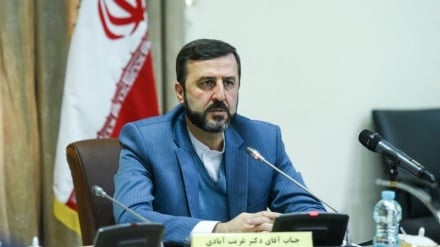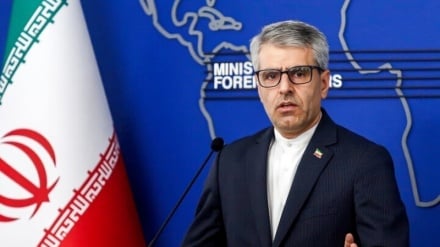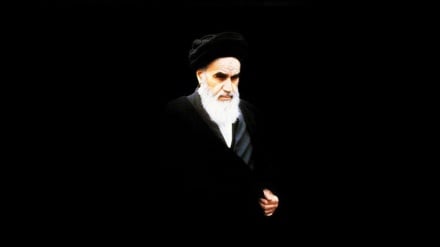Ashura traditions in Iran
The battle of Imam Hussein and his loyal companions against the hordes of Yazid took place at Karbala desert on the day of Ashura, 61 AH. This event was the most poignant catastrophe in the history of Islam and humanity.
It led to the martyrdom of the younger grandson and third infallible heir of the Prophet of Islam, Imam Hussein and his companions and the captivity of the Imam's kin and kith, mostly consisted of women. However, the martyrdom of Imam Hussein and the events ensuing it revived Islam and the Prophetic practice as Islam had been totally distorted by the tyrant Umayyad regime, especially the libertine Yazid. Ever since, the faithful and the free-spirited people in the world have respected the lofty position of Imam Hussein and held mourning ceremonies for him across the world.
The mourning ceremony for Imam Hussein and his companions was held for the first time on the 11th of Moharram, just one day after Ashura by the Ahl al-Bayt (progeny of the Imam) beside the pure corpses of martyrs. Upon the arrival of the caravan of captives in the city of Kufa, Imam Sajjad, Lady Zeinab and Lady Umm Kulsum (Peace upon them), Imam Hussein's son and two sisters respectively, delivered fiery speeches to the people of Kufa who had gathered to watch the captives whom they thought to be renegades as the propaganda apparatus of the Umayyad regime had spread everywhere. But these speeches turned the tide against the tyrant regime and the sound of crying and whining could be heard from houses as people were informed of realities.
Then, as the caravan of captives entered the city of Damascus, Imam Sajjad delivered a long and disclosing sermon, and the ruling system, scared of public opinion, permitted the Ahl al-Bayt to mourn for their martyrs for three days. The third major mourning was held in Medina when the Ahl al-Bayt of Imam Hussein arrived in the city of the Prophet. This caused the entire city to weep.
In Iran, mourning ceremonies began immediately after the martyrdom of Imam Hussein; but in 353 AH when Muezz-ul-Dowla Deilami ordered the shops and markets to be closed and declared Tasua and Ashura as public holiday. Later on, with the recognition of Shia as the official school of the country during the Safavid rule, the mourning for Imam Hussein entered a new phase.
With the victory of the Islamic Revolution in 1979, all sorts of mourning are held in cities and villages in every region and at the houses of Sources of Emulation. Let's have a brief review of these ceremonies.
"Marsieh Sorayi" or "Rowzeh Khani" which means elegy in praise of Imam Hussein and his companions, is common in Iran as in other parts of the world. Nauheh is a type of religious elegy which is recited in a sad tone accompanied by beating hands on chests or chains on shoulders and back.
Nakhlgardani is a glorious tradition which is held in Iran especially in the central province of Yazd. It contains a huge wooden structure that is carried on the shoulders of people as the symbol of the coffin of Imam Hussein (AS). As a matter of fact, Imam Hussein's body had not received any official funeral.
Tashtgozari is another tradition that is held specially in Ardebil and Azerbaijan region. It is an old tradition that is held in the last days of the month of Zil-Hajja. It is a preparation for Moharram and is done by pouring water in a tub while participants try to touch the water to be blessed. Tasht means bowl and tub. It is the symbol of the goat-skin water bag of Hazrat Abbas, the valiant brother of Imam Hussein (AS).
The oldest tradition of mourning is Shakhsey Vakhsey among Azeri people of northwest Iran. It is in fact a distortion of Shah Hussein Vay Hussein meaning "King Hussein, Woe Hussein". This tradition is held from several days before Moharram and continues till the noon of Ashura. In this type of mourning, young and old men and children walk through streets and alleys while reciting doleful panegyrics on Imam Hussein and Ashura. Sometimes, big and small drums accompany the procession.
Ta'ziekhani is a common tradition among Iranians. It is a religious drama and indeed the most complete type of popular drama in Iran which is about the events of Karbala. Ta'ziehkhani is simply called Ta'zieh. In some regions it is also called Shabihkhani. Most of this drama is in verse and a sad music accompanies it in some parts. In many regions of Iran, especially northwest and center of the country, hundreds of theatrical troupes go around from village to village and town to town to dramatize the events of Karbala for the audience. The members of these troupes enact the roles of personalities in a very simple but impressive way so that most of the audiences become sad and shed tears.
RM/ME


